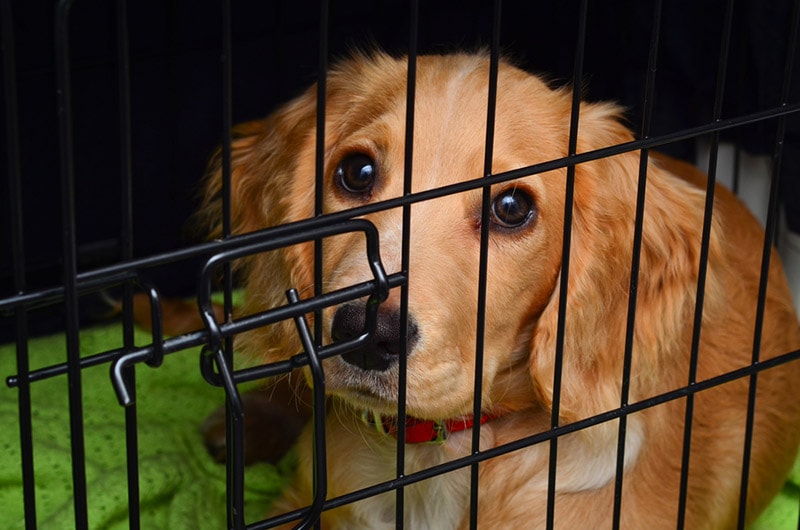Man, I thought getting a puppy would be all sunshine and cuddles. And mostly it is, but then came the kennel. Or as I called it, the ‘scream box’ for the first few weeks. Our little guy, let’s call him Buster, just wasn’t having it. Not one bit.
Every time I’d try to put Buster in his kennel, even if I was right there, the barking would start. And I’m not talking about a few cute yips. Oh no. This was full-on, ear-splitting, “the world is ending and it’s all your fault” kind of barking. Sleep? Hah, forget it. Trying to get any work done while he was in there? Absolutely impossible. I was starting to think I’d made a huge mistake with this whole puppy thing, or at least with the kennel idea.

I read some stuff online, tried a few things people suggested. Someone said to toss a treat in. Did that. He’d gobble the treat and then bark louder. Someone else said to just let him cry it out. I tried that for about ten minutes and felt like the worst human on the planet, plus my neighbors probably thought I was torturing a small animal. I even tried yelling “Quiet!” which, looking back, was pretty dumb. It just seemed to egg him on, like I was barking back at him.
Figuring Out the Kennel Vibe
So, I had to rethink everything. I realized I was treating the kennel like a puppy jail, and he was picking up on that. My first big change was to make that kennel the best place on earth. Here’s what I did:
- Super Comfy Bedding: I put his softest blanket in there, one that smelled like him and his mom.
- Kennel-Only Toys: He got a special Kong toy that he ONLY got when he was in the kennel. I’d stuff it with a bit of peanut butter. That made going in a bit more exciting.
- Meal Times in the Den: I started feeding him all his meals in his kennel. At first, I left the door wide open. He’d just walk in, eat, and walk out. No pressure. After a few days, I’d close the door while he ate, and open it as soon as he was done.
The Ignoring Game – This Was the Hardest Part
Okay, this next bit was tough, I won’t lie. When he started that protest barking, I had to completely and utterly ignore him. I mean, turn my back, no eye contact, no talking to him. If it was really bad, I’d leave the room. The first few times, he actually barked harder, like, “Hey! You’re not supposed to ignore me when I’m this upset!”
But here’s the magic: The absolute second he stopped barking, even if it was just to take a breath, I’d calmly walk back, say “Good quiet!” in a happy voice, and give him a tiny treat through the bars. If he started barking again when I approached, I’d immediately turn and walk away. He slowly, and I mean slowly, started to connect the dots: barking makes human go away, being quiet makes human come back with good things.
Baby Steps with Time
I also realized I was asking for way too much, too soon. I couldn’t just chuck him in there for an hour and expect him to be fine. So, I went back to basics:
- I’d lure him in with a treat, close the door, stay in the room, and let him out after just 30 seconds if he was quiet. Lots of praise.
- Then we worked up to a minute. Then two minutes. Then five. All while I was still in the room, just chilling, reading a book or something.
- Once he was cool with that, I started leaving the room for super short periods. Literally, I’d step out, count to five, and come back in (if he was quiet). Then ten seconds, then thirty, then a minute.
It felt painfully slow sometimes, but pushing him too fast always set us back.
A Tired Puppy is a Good Puppy (Usually)
This was another big one for us. I made sure Buster was properly tired out BEFORE any planned kennel time. Not exhausted to the point of collapse, but a good play session, a decent walk, or some training to work his little brain. It made a world of difference. If he was already sleepy and content, he was much less likely to kick up a fuss when he went into his kennel.

Where We Are Now
It took a few weeks of being super consistent. And I mean, everyone in the house had to be on the same page. No cheating. There were definitely days I wanted to tear my hair out. But slowly, the barking fits got shorter and less frequent. Now? Buster often goes into his kennel on his own to nap! When I tell him “Kennel up!” he trots right in. He might give a little sigh, but the frantic barking is a thing of the past. It’s seriously amazing.
So, if you’re going through this, hang in there. It’s not easy, and it takes a ton of patience. But making the kennel a positive place and teaching them that quiet gets them what they want – it really does work. You just gotta be more stubborn than your puppy, and believe me, that’s saying something!





